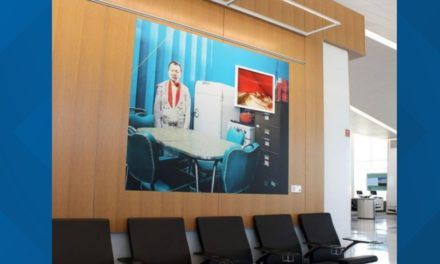While we have questioned the ultimate usefulness of the Wharton-advocated development fees in correcting the fatally flawed tax structure that plagues our community, his proposal is not the devastating attack on the homebuilding industry as some would suggest.
While the rhetoric overheats quickly whenever the homebuilding or development industries are involved, but what’s regularly missing from the debate on Shelby County Mayor A C Wharton’s tax proposals in the past is a sense of context.
We’ve all heard that these new development fees would threaten the vitality of home building in Shelby County and therefore our entire economy, but ignored in the discussion is a central fact: the fees for building a house in Memphis and unincorporated Shelby County are the bargain of the region.
For example, a 2,500 square foot house costing $175,000 has fees of $592 if built in Memphis or unincorporated Shelby County.
However, if that same house is built in Arlington, Germantown or Lakeland, fees there would add up to $750. Then there’s the $881 in Southaven, $874 in Oakland and $810 in Hernando. If it were built in Collierville, there would be $1,088 in fees; in Olive Branch, fees would amount to $1,276; and in Horn Lake, $1,912.
In fact, if you’re only interested in a place with cheaper development fees than Memphis and unincorporated Shelby County, you’ll have to move to West Memphis ($242) or Covington ($355).
In case you’re thinking that it must be the subdivision developers that are taking the biggest hits here, guess again. If developers build a subdivision in Memphis, it’s $5,250 for a 50-lot subdivision with one-acre lots and 4,000 feet of roads. In unincorporated Shelby County within three miles of Memphis city limits (its so-called extraterritorial jurisdiction), the cost is $5,365, and outside the three mile limit, it is $9,500.
The tab in Arlington would be $18,150; Germantown $11,600; Lakeland, $165,150; Collierville, $22,050; and Hernando, $25,000.
It’s in subdivisions south of the state law that the development fees are an incentive – in Horn Lake, $600; Southaven, $450; Olive Branch, $3,500.
While many of our region’s cities have forms of development fees in the guise of significantly higher sewer connection fees, water connection fees, fire development fees and plans review fees (for example, Collierville charges $13,250 for subdivision inspection for a 50-lot subdivision while Memphis and Shelby County doesn’t charge anything), Mayor Wharton continues to pursue adequate facilities taxes or impact fees.
While it’s possible to argue that Mayor Wharton’s development fees are “too little too late,” it’s more to the point that they’ll produce about $10 million a year, which is way too little to produce any important changes in county taxes. In fact, it’s expected that the fees would be used to pay upcoming increases in the county’s suffocating debt service and would not reduce the existing tax rate at all.
It’s that existing tax rate that’s got to be lowered if Memphis is to become competitive within the regional framework.
Now, there is a major disincentive for anyone to live in Memphis, which has tax rates considerably higher than other municipalities in the region.
(Of course, one reason that its sister cities within Shelby County pay less is that county government has routinely subsidized public services within the smaller cities for years.)
It’s unfortunate that adequate facilities taxes and impact fees were not authorized 10 years ago, back at a time when they could have made a difference in forestalling future tax increases.
Philosophically, it’s hard to argue with the rationale for them. They are aimed at paying the cost of the new infrastructure associated with new development. However, the proposed Wharton development taxes would have to be roughly 10 times higher to get even close to paying for the new county debt associated with suburban sprawl.
Two pieces of unfinished business: following Friday’s blog, we were asked two questions – 1) What’s the difference between impact fees and adequate facilities taxes? and 2) Isn’t the suggestion that East Tennessee legislators could block local development fees an exaggeration?
First, impact fees are one time user fees on new development, and the amount of the fee depends on a financial analysis that proves that the amount of the fee is tied directly to the amount of the infrastructure improvements. In other words, the improvements must be detailed and specific, and the rate of the fee is set on the basis of the amount of the improvements. The revenues from the impact fees are placed in a special account where they are used to pay for the improvements.
This is why adequate facilities taxes are normally a preferred source of revenues. They are essentially privilege taxes on the development industry, and there is no nexus between the setting of the fee rate and the cost of the new public infrastructure. Also, the revenues aren’t required to have their own separate account.
Second, before the bill allowing development fees can be introduced to the Tennessee General Assembly, it has to be endorsed by all Shelby County legislators or it will not move forward. If the local delegation finally endorses Wharton’s bill, it would be then that legislators from other parts of the state could untrack the legislation.
For example, two years ago, the local legislative delegations for Rutherford County and Fayette County approved bills authorizing the counties to pass adequate facilities taxes. Both passed the Tennessee Senate, but both failed in the House despite the local support.
As for the East Tennessee legislators, Mayor Wharton would like the chance to convince them to authorize development fees for Shelby County. So far, he can’t even convince the Shelby County legislative delegation.



